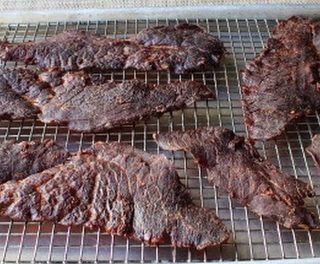Recently we purchased a pressure cooker. I was actually against it at first, after all we have enough pots and pans without adding more. Since our purchase I’ve learned a couple things and now love our little pressure cooker. Here’s some safety tips for those of you who have also just joined the pressure cooker family.
Pressure Cooker Safety Tips
- Before and after cooking, check your equipment.
- Always check the rubber gasket (the ring of rubber that lines the lid of the cooker) to make sure it isn’t dried out or cracked. Some manufacturers recommend replacing the gasket annually, depending on how often you use your cooker. You might want to order an extra to keep on hand in case you discover yours is ripped just as you’re starting a recipe. Also check to make sure that there is no dried food on the rim of the pot, which could break the seal.
- Check the lid for cracks, and make sure the vent is open and clean. Check the handles: A loose handle screw could spell disaster when moving a hot pressure cooker. Even new pressure cookers can have problems, so don’t make assumptions based on its age.
- Clean the cooker properly. Remove the gasket and wash it separately, along with the lid and the pot. Clean the valve with a wooden toothpick, making sure it moves freely and isn’t stuck. Store the cooker with the lid upside down on the pot, rather than locked in place.
- Don’t buy a pressure cooker at a flea market or auction.
- Bargain pressure cookers or older models might have cracked lids or gaskets that don’t fit properly.
- Follow the instruction manual.
- Read the instructions several times before diving into a recipe.
- Measure liquids precisely.
- This is critical to increase the cooker’s pressure. Follow a recipe to make sure the amount of liquid is correct.
- Don’t overfill the pressure cooker.
- Careful measuring is a must. For most foods, don’t fill the pressure cooker more than two-thirds full, to avoid the potential of food blocking the vents. Foods like beans and grains, which tend to swell as they cook, should only fill about half of the cooker.
- Frothy foods can block the steam valves and the pressure-release vents on your pressure cooker. Foods that froth include pasta, rhubarb, split peas, oatmeal, applesauce and cranberries. When cooking these foods, follow a trusted recipe and make sure the quantity in the pot is well below the recommended maximum-fill line.
- Release the pressure safely.
- You can release pressure either by just removing the cooker from the heat and letting it sit until the pressure goes down (natural release), running cold water over the lid of the closed pan (cold water release) or using the pot’s steam release valve to expel the steam (quick release). Make sure to protect your hands with pot holders as you’re handing the cooker, and if you’re using the quick release method, be sure that your face, hands and body are away from the steam vent. When you open the cooker after the steam has been released, hot steam will still escape from the pan, so as you open the pan, tip the lid away from you and hold it over the pan so that the hot condensation doesn’t drip onto you. Each pressure cooker operates differently, so consult your instruction manual.
- When you open the pressure cooker, plenty of steam will escape. Have dry pot holders on hand—if the holder is wet, you may burn your hand. Open the pan with the lid facing away from you. Don’t let condensation drip on you.
- Use enough liquid.
- A pressure cooker needs liquid to create the steam that cooks the food. A good recipe will take this into account, but if you’re creating your own, you’ll need at least 1/2 cup of water or other liquid. If the steam doesn’t seem to be building with this amount, open the cooker (releasing any steam first) and add a little more until you reach pressure.
- Don’t pressure fry.
- Yes, the “Colonel” did it, but you shouldn’t. Using more than a tiny amount of oil in your pressure cooker can be very dangerous and could melt the gasket and other parts.



